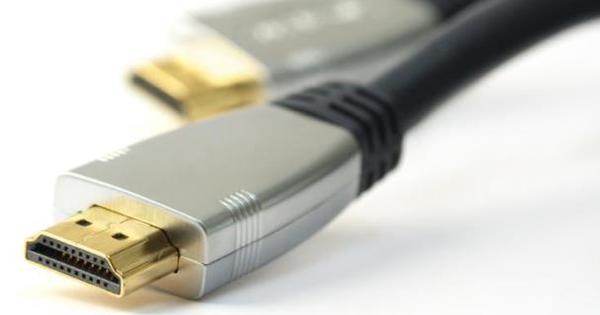With the Orbi RBK20 and RBK23, Netgear adds another new member to the Orbi family of Wi-Fi mesh systems. Netgear also calls the new products Orbi Micro. We are curious to see how the new WiFi mesh system performs.
Netgear Orbi RBK23
Price: €249 (RBK20), €338 (RBK23)Memory: 512MB RAM and 254MB flash storage
Router connections: WAN port (gigabit), 1 x 10/100/1000 network port
Satellite connections: 2 x 10/100/1000 network connection
Wireless: 802.11b/g/n/ac (two antennas per frequency band, maximum 866 Mbit/s) with beamforming and MU-MIMO
Wireless link to satellite: 802.11ac (two antennas, maximum 866 Mbit/s)
Dimensions: 16.8 x 14.2 x 6.1cm
Website: www.netgear.nl 9 Score 90
- Pros
- Good performances
- Convenient parental controls
- Relatively cheap
- Compact size
- Negatives
- Few network connections
After Netgear introduced Wi-Fi mesh system Orbi RBK50 at the end of 2016, the cheaper RBK40 and RBK30 followed in 2017. The difference with the previously introduced Orbi RBK50 was that AC2200 technology is used instead of AC3000 technology. The difference between the two technologies is that two instead of four data streams are used for the mutual wireless connection between router and satellites. The latest addition to the Orbi range, the RBK20 and RBK23, also utilize AC2200 technology. Both sets use the same components with the RBK20 consisting of one router and one satellite while in the RBK23 you get one router and two satellites.

A lot smaller
What immediately stands out is the small box of the RBK23 that we tested for this article. The new router with type number RBR20 and new satellites with type number RBS20 are therefore a lot smaller than the existing Orbi systems. Where the RBK40 introduced last year already reduced the dimensions from 22.6 x 17 x 6 cm to 20.4 cm x 16.7 x 8.3 cm, the dimensions of the newest member are only 16.8 x 14.2 x 6.1 cm. The new Orbi is therefore nice and compact and Netgear itself also speaks of Orbi Micro. Although small is of course always nicer, you do sacrifice something. Both the new router and satellite have only two network connections where the previous variants have four network ports. This means that you only need one network connection on the router in addition to the WAN port. So you will soon need a switch if you want to use Orbi as a router. Wifi mesh systems from other manufacturers such as Linksys or TP-Link already had two network connections.

Many possibilities
The web interface is identical to that of previous Orbi systems and that means you get expanded router capabilities that can be accessed via a classic web interface. You can also manage Orbi via an app that is now a lot better than a year ago and is sufficient for daily operations such as activating the guest network or blocking devices. For the extensive settings such as the VPN server, port forwarding or the extensive wireless settings, you still have to be in the web interface.

For more advanced users, it is nice that you can also set up Orbi as an access point system, so that you can use the system as a supplement to your own router. Incidentally, this is also possible with almost every competing WiFi mesh system. You can also optionally connect the satellites to the router. Handy if you happen to have a cable running to a floor, because this way the wireless link to a possible other satellite is less taxed.

New compared to previous tests is that the Orbi with Disney's Circle has an extensive form of parental control. Circle works well and is accessible to set up. The free version allows you to set filters and manually pause internet access. To automatically set up internet access based on, for example, time limits or bedtime, you have to pay 5 euros per month. Circle only works when you set up Orbi as a router and is not available in access point mode.
Performance
We tested its performance in the field by using the Orbi in a three-storey house. In a mesh scenario we place the router on the ground floor and the satellites on the other floors, while in the star scenario we place the router on the first floor. The mesh scenario is the most important and corresponds to how a Wi-Fi mesh system will typically be used.
If we put the router on the ground floor in the mesh scenario and then a satellite on both the first and second floors, we get 503 Mbit/s on the ground floor. On the first floor there is still a very decent 353 Mbit/s left, while in the attic we get 154 Mbit/s. In the star scenario we get 465 Mbit/s on the first floor where the router is located, while we get 370 Mbit/s in the attic and 375 Mbit/s on the ground floor. So the star scenario provides better performance as expected, but the mesh scenario is what Orbi will typically use. Overall, the performance is good and comparable (and even slightly higher) than we previously achieved with the RBK40.

Conclusion
With the RBK20 and RBK23, Netgear is once again expanding the Orbi range where you now have a set consisting of a router and two satellites for 338 euros, while you now lose 249 euros for a router plus one satellite. This makes the set consisting of one router and two satellites (RBK23) cheaper than comparable AC2200 systems from Linksys and ASUS. If you want to provide your entire house with WiFi, the new Orbi is a great system with the small number of network connections as a disadvantage.

